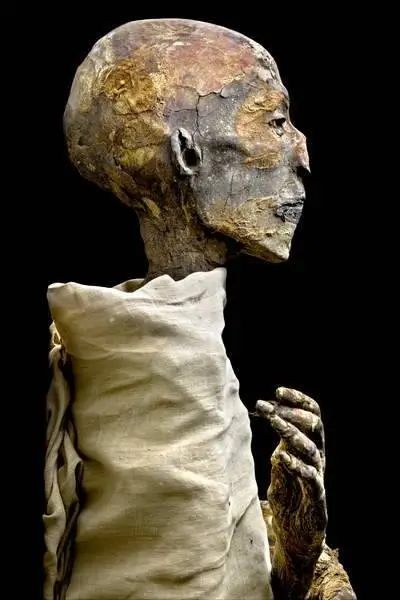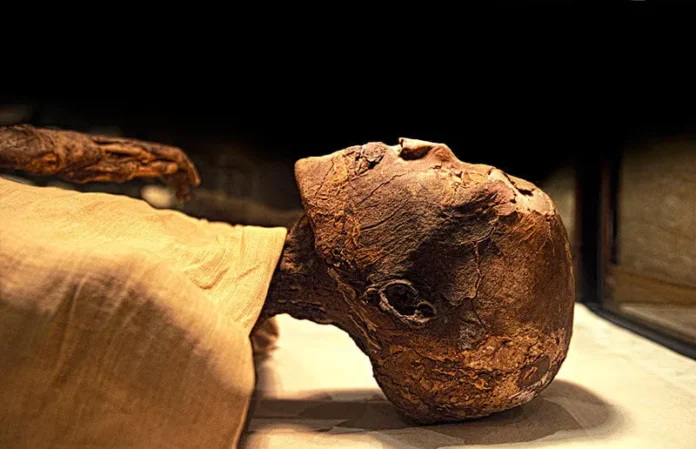The mummy of Ramesses IV was found in the royal cache of Amenhotep II’s tomb (KV35) in 1898. After a short reign of about six and a half years, Ramesses IV died and was buried in tomb KV2 in the Valley of the Kings.
The king’s eyes were replaced by artificial ones made of small onions, a unique case in mummification. In addition, each nostril was covered with the skin of an onion; it is possible that onions were used for their well-known antiseptic qualities. King Ramesses IV was the eldest son of King Ramesses III. He succeeded his father after having saved the throne from his father’s murderers and punished the conspirators, but he is considered to have been the first of a series of increasingly weak rulers.

Ramesses’ chief wife was Queen Duatentopet, also known as Tentopet or Male, who was buried in QV74. His son, Ramesses V, succeeded him to the throne. Despite Ramesses IV’s many endeavors for the gods and his prayer to Osiris—preserved on a Year 4 stele at Abydos—that “thou shalt give me the great age with a long reign [as my predecessor]”, the king did not live long enough to accomplish his ambitious goals.

Originally, he was buried in tomb KV2 in the Valley of the Kings, West Thebes, but he was reburied in the tomb of Amenhotep II (KV35). His mummy was clumsily rewrapped and labeled by later priests.
New Kingdom, 20th Dynasty, Ramesside Period, reign of Ramesses IV, ca. 1155-1149 BC. Now in the National Museum of Egyptian Civilization (NMEC). JE 34567.




